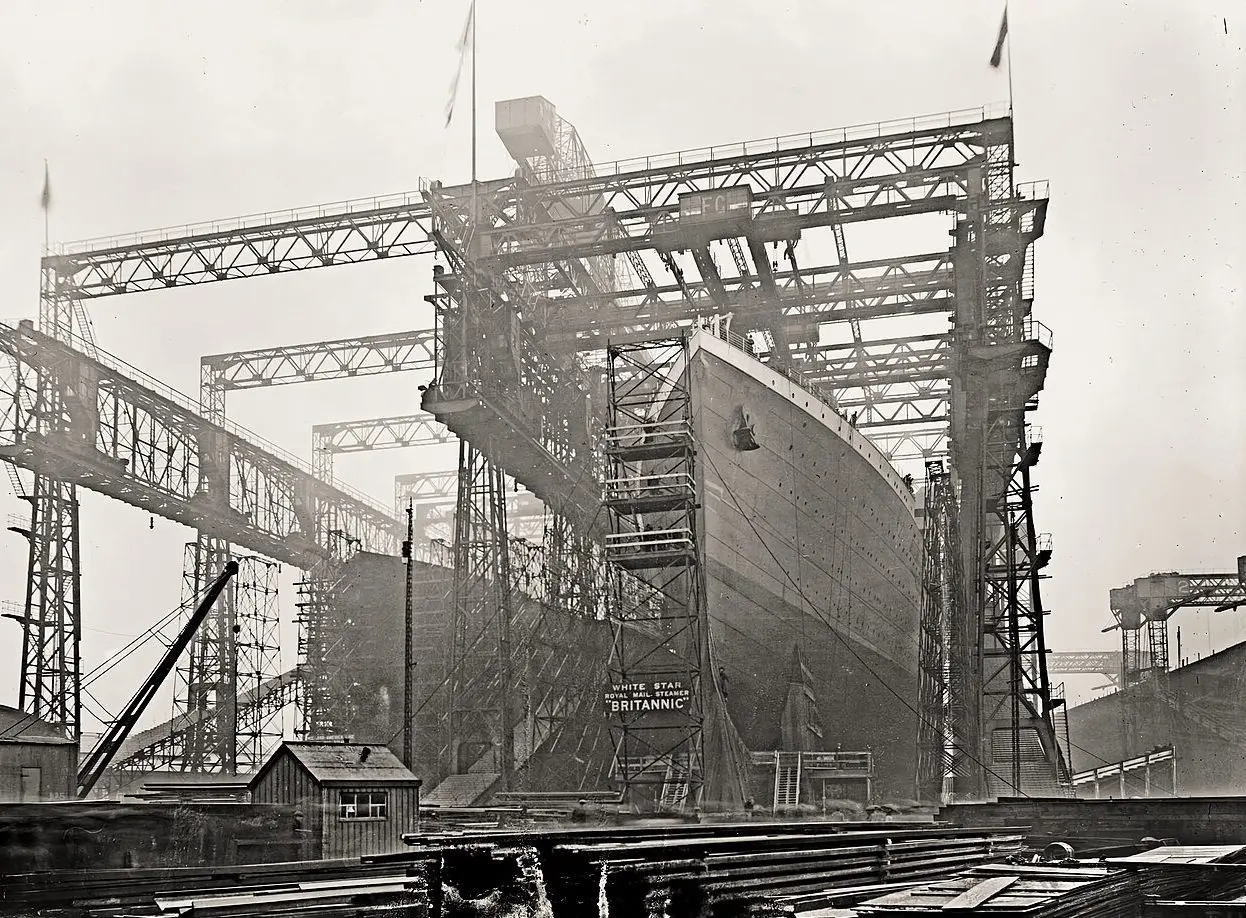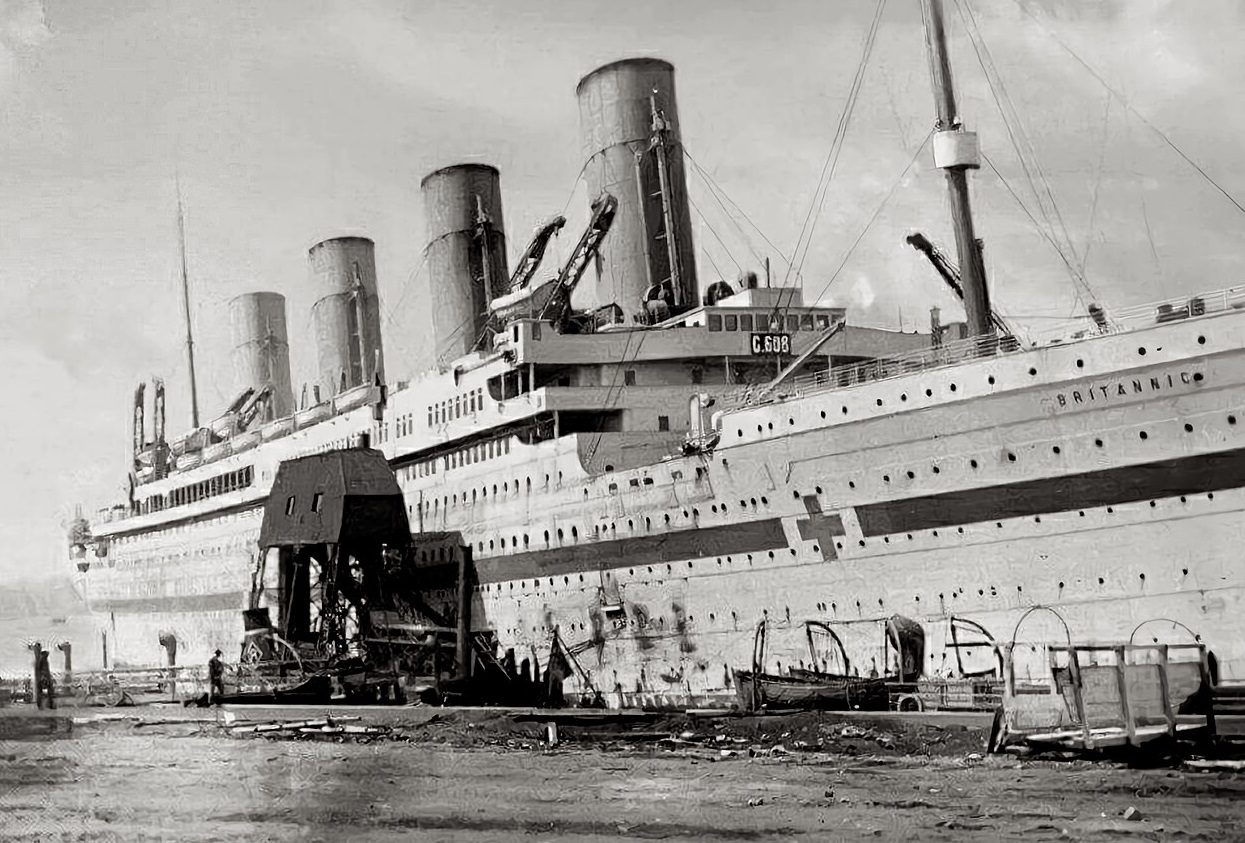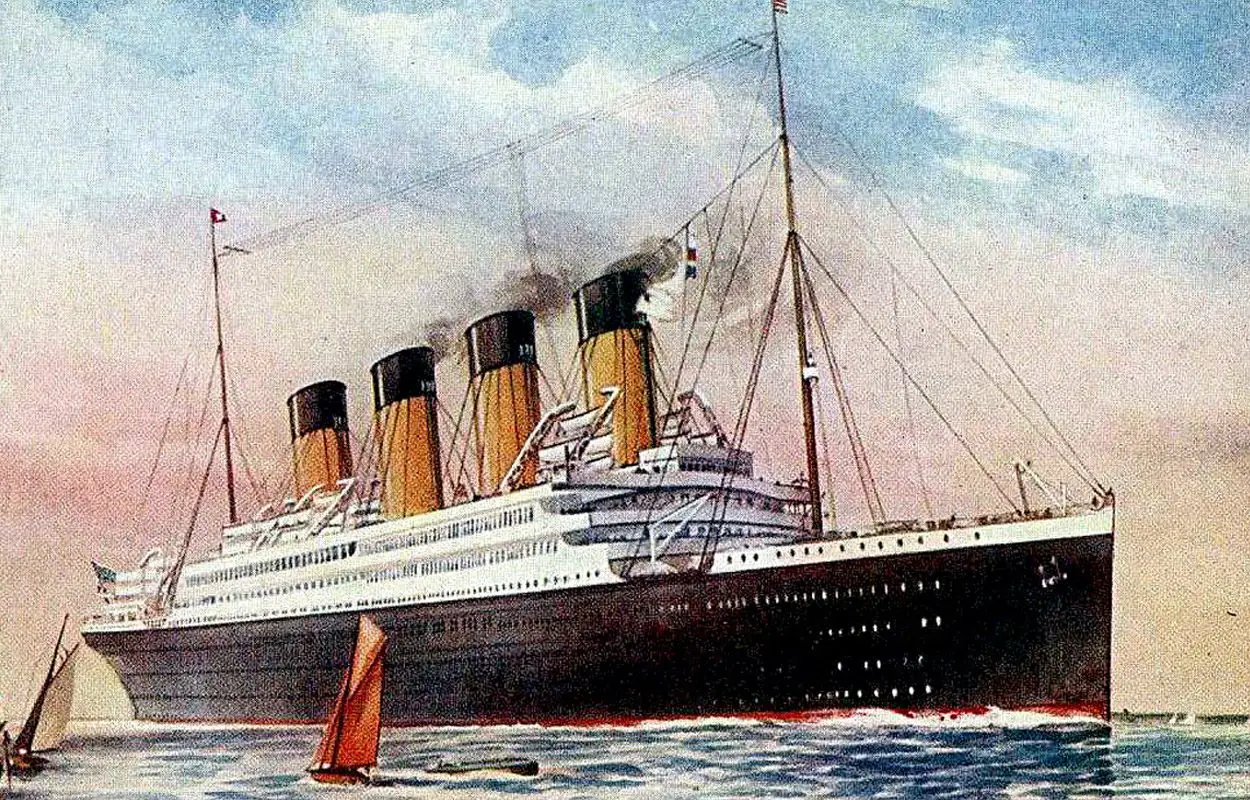The Britannic was one of three Olympic-class ocean liners built by the Harland and Wolff shipyard for the White Star Line during the early 20th century.
The construction of the Olympic-class was in response to the intense competition with Norddeutscher Lloyd, the Hamburg America Line, and their main competitor, Cunard, which had recently launched the Lusitania and Mauretania.
At the time, ocean liners were competing to hold the Blue Riband, an unofficial accolade given to passenger liners with the highest average speed when crossing the Atlantic Ocean.
Construction began on the first of the new line in 1908 with the Olympic. The Olympic was the lead ship of the trio with a length of 269.1 metres and a displacement of 52,067 tons. Shortly after, construction began on the Titanic in 1909 in parallel with the Olympic.

The Britannic was the third and final vessel in the Olympic class and the second White Star ship to bear the name Britannic. The original dimensions of the ship were similar to those of her sister ships, but these were altered while still on the building stocks due to safety concerns.
The Britannic had a length of 269.1 metres and a displacement of 53,200 tons. In response to the Titanic disaster, she was fitted with a double hull, raising of six out of the fifteen watertight bulkheads up to B Deck, and enhancements to the compartments that meant the ship could still stay afloat if the six compartments were flooded.
Extra lifeboats could be stored near the davits on the roof of the deckhouse, while the design improvements meant that all lifeboats could be launched even in the event of the ship listing.
Britannic’s keel was laid in 1911 at the Harland and Wolff shipyard in Belfast on the gantry slip that was previously occupied by the Olympic. Before she could commence her transatlantic service between New York and Southampton, hostilities broke out in Europe with the start of WW1 in 1914.

The ship remained at dock until the Admiralty sent a requisition order for the Britannic to be converted into a hospital ship. She was fitted with 3,309 hospital beds, while the first-class reception room on D Deck was transformed into operating rooms. On the exterior hull, large red crosses and a horizontal green stripe were painted to make apparent that the ship was protected under the 1906 Geneva Convention.
The Britannic was renamed to the HMHS (Her Majesties Hospital Ship) Britannic and was manned by a complement of 101 nurses, 336 non-commissioned officers, 52 commissioned officers, as well as a standard crew of 675 persons.
After completing a series of successful missions transporting injured troops, the HMHS Britannic returned to Belfast to be converted back to a passenger liner, with the British government paying the White Star Line £75,000 in compensation.
Several months later, the conversion was halted as the necessity of the war effort required that the Britannic return back into military service (once again taking the name, HMHS Britannic).
She was sent to the Middle Eastern theatre to transport sick and wounded soldiers, but while steaming through the Kea Channel in the Aegean Sea on the 21st October, 1916, she struck a mine laid by the German SM U-73 submarine of the Imperial German Navy.
The explosion caused four watertight compartments to fill with water and started to flood the main boiler room. The ship’s commanding officer, Captain Bartlett, issued a distress signal and ordered the crew to seal the watertight doors and prepare the lifeboats.
Unbeknownst to them, the explosion had damaged the antenna wires, meaning that their SOS could be transmitted, however, any responding messages from nearby ship could not be received.
Despite the HMHS Britannic being designed to stay afloat if her first six watertight compartments were flooded, nurses had opened the portholes along the front lower decks that flooded the ship’s interior, causing the angle of list to increase.
Hoping to save the ship, Captain Bartlett gave the order to navigate towards the Greek island of Kea in the hope of beaching the vessel. As a precaution, the crew and hospital staff began preparations to evacuate and started lowering the first boats into the water without waiting for orders from the bridge. Two of the boats were sucked into the ship’s propeller, mincing the boats and their passengers.
Once the flooding reached D-deck, Captain Bartlett realized that the HMHS Britannic was doomed and sounded two long blasts of his whistle, the signal to abandon ship.
With most people evacuated, the ship gradually capsized to starboard and the funnels collapsed one after the other. By the time the stern was out of the water, the bow had already slammed into the seabed, before finally slipping beneath the waves 55 minutes after she struck the mine.
Violet Jessop, an ocean liner stewardess who survived the RMS Titanic disaster, as well as working as a nurse on the HMHS Britannic, recalls: “She dipped her head a little, then a little lower and still lower. All the deck machinery fell into the sea like a child’s toys. Then she took a fearful plunge, her stern rearing hundreds of feet into the air until with a final roar, she disappeared into the depths, the noise of her going resounding through the water with undreamt-of violence….”
In total, 30 people lost their lives from the 1,066 onboard, with the HMHS Britannic becoming the largest vessel lost during WW1. The White Star Line was compensated for the loss of the ship by the award of SS Bismarck as part of postwar reparations.
The HMHS Britannic would remain undisturbed until she was rediscovered at a depth of 122 metres by Jacques-Yves Cousteau in 1975.
Header Image : Britannic – Image Credit : Frederic Logghe – CC BY-SA 3.0







